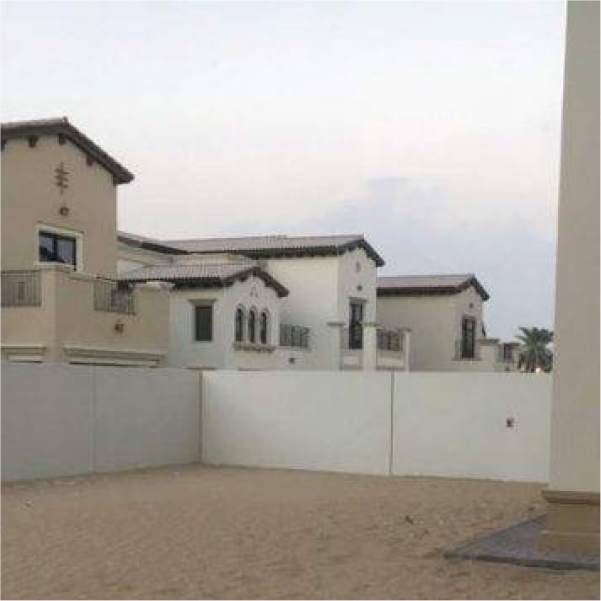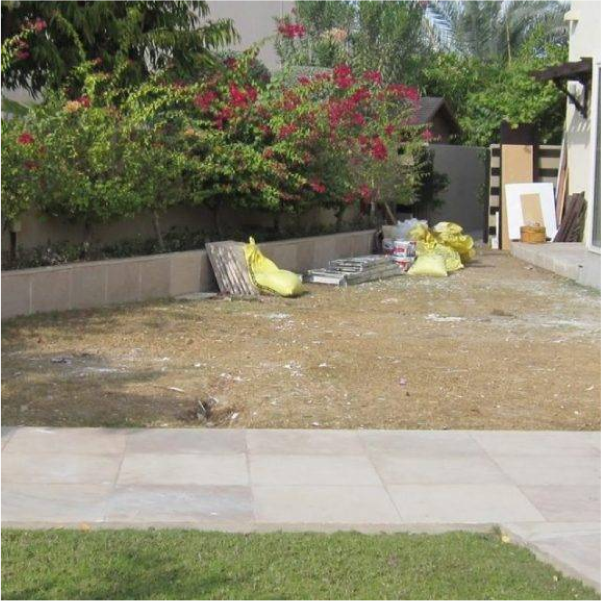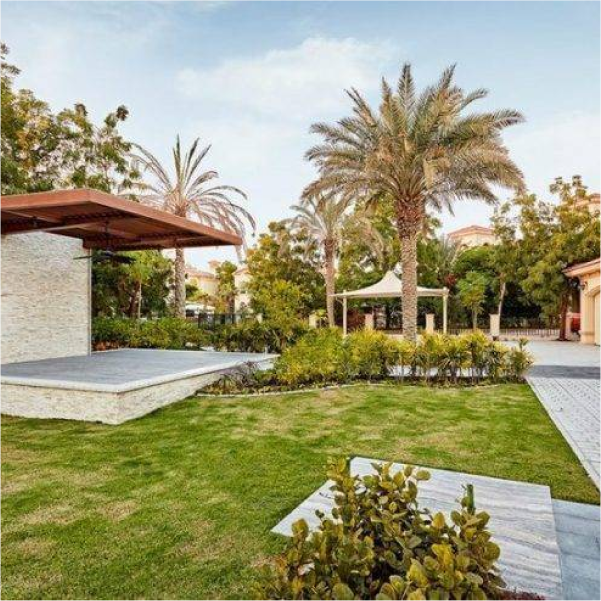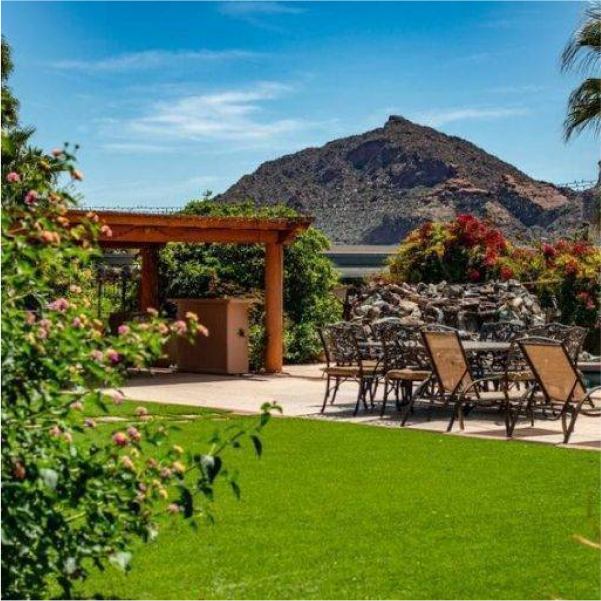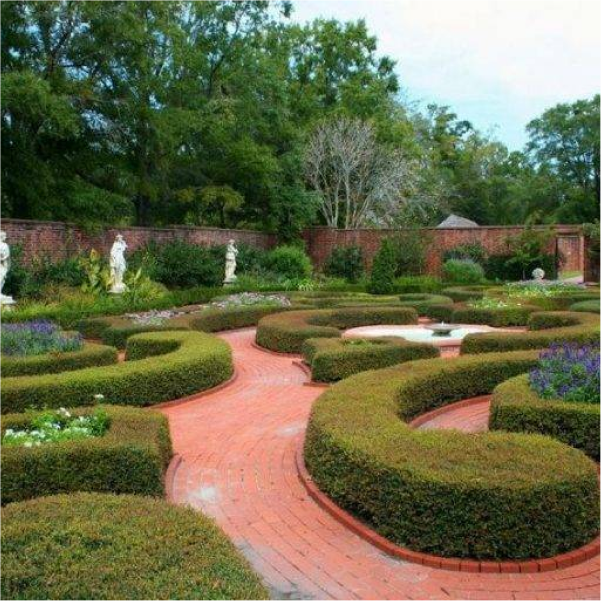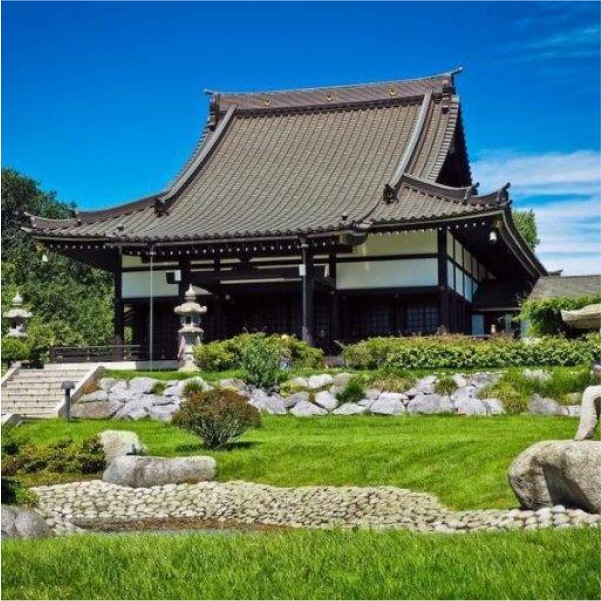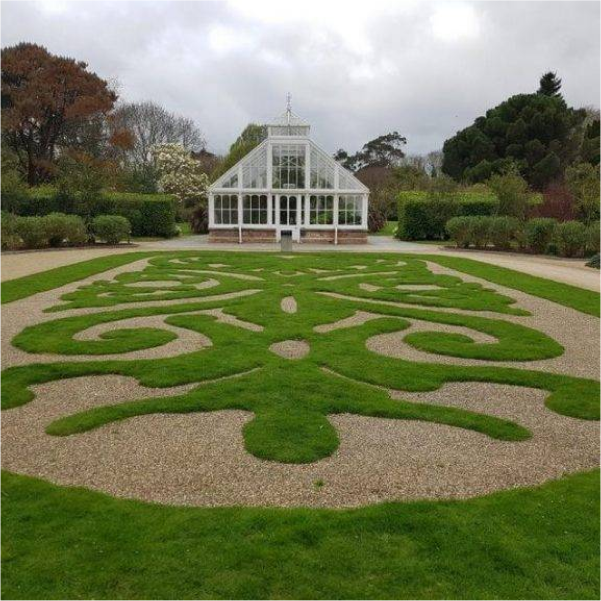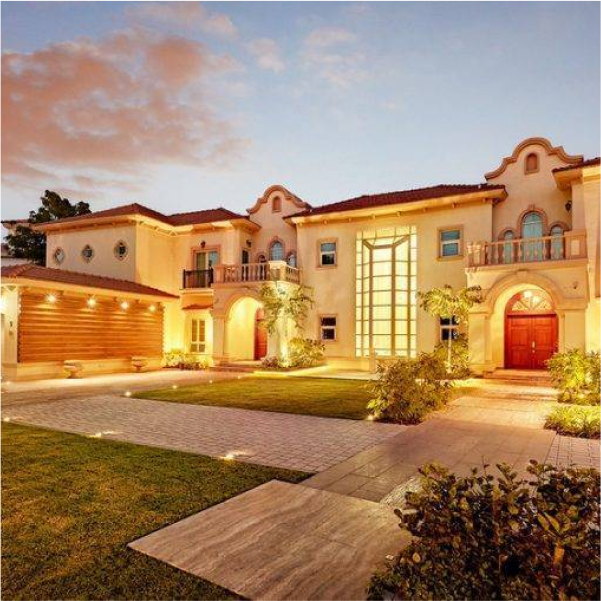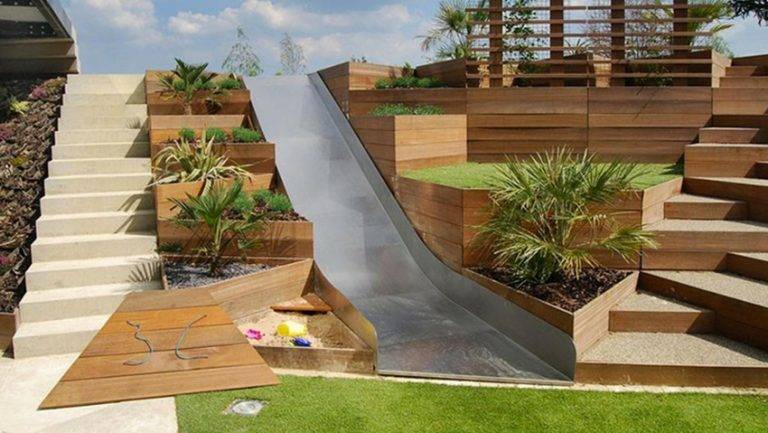N
ature is essential to our existence; for eons we have depended on it to feed us, clothe us and shelter us. Not all of us are lucky enough to experience nature everyday.
As cities expand to accommodate growing populations, we use more and more land to build on. Hence, a little patch of green takes on even greater importance.
We love gardens, but designing the right type of garden takes skill and experience. Read on for expert tips on how to design a garden, straight from the horse’s mouth!
How To Design A Garden – Where To Begin?
Initial Meeting
As with any design, the first step in understanding how to design a garden, is to establish intent and purpose. Therefore, the first order of business is to meet the client for an initial briefing.
This initial meeting is crucial because it helps to get a feel for the client, the way they live and what they like. This also gives us a chance to take a look at the site and review existing site conditions.
If you want to know how to design a garden, below are a few important things to consider.
The Site
The site is one of the defining factors in considering how to design a garden.
How big is your property? How much space do you have to devote to a garden? Are there any existing features, such as an old tree or existing slopes that you will want to retain in the new design? What is the climate like? Are there existing views from the house that you want to preserve?
The answers to these questions will guide you on how to design a garden.
Lifestyle
This is one of the most important aspects to consider before any design can begin. Whether big or small, we can measure the success of a garden design by looking at how it serves the owners. A well designed garden will cater to your lifestyle and account for your personal preferences and style aesthetic. It will give you many hours of enjoyment with friends and family. This can only happen if you tailor the garden to your specific needs. So we begin by gathering some basic information.
The Family
How big is the family? Do you have children and if so, how old are they? Do you have pets? This can help determine design factors such as play areas for children or non-toxic plants for pets.
Source: Recent Milestone Project
How Will You Use Your Garden?
How do you envision your garden space? Is it more of a private haven for family members or do you like to impress guests with lavish parties?
If you have small children, would you like a part of the garden to incorporate a play area? How often do you entertain and how many people do you usually cater parties for?
The design criteria will differ widely if you entertain large numbers of people – 100 or more – a couple of times a year versus more frequent parties for smaller groups of 10 – 15 people.
Outdoor Elements
The is the design program and outlines what spaces you’d like in your garden. Is your garden big enough to accommodate a pool or would you rather have a more intimate jacuzzi that people can sit around? If you have a smaller garden, but enjoy having water in your garden, you could opt for a water feature. If you have large parties, would you like an outdoor bar or dining table? When moving through your garden do you want to create smaller pockets of seating for groups of guests or would you prefer a large paved entertainment area that can accommodate bigger numbers?
For large parties, or even smaller groups of people, you need to consider catering requirements. Where would you want caterers to set up the food and how do you want to serve your guests? Do they serve themselves or would you have staff to serve them? If you entertain often, it might make sense to design built-in seating or have surplus outdoor seating for a dedicated entertainment space rather than having to rent furniture for every occasion. Paying attention to these details is an important aspect of enjoying your outdoor space when hosting a party.
Design Style
Most clients bring back ideas from their travels. Many clients want to incorporate these inspirational ideas into their gardens.
With the internet at our fingertips, you can also get inspiration from sites like Pinterest and Instagram. Keep a scrap book or collection of images and ideas that you like. Such research is invaluable to a designer and helps to clarify the design direction based on personal needs and preferences.
Is there a particular style you prefer for your garden? There are many design styles to choose from including Mediterranean, English, Tropical, Zen, contemporary and modern. These can be formal or informal and should complement the style of the house.
Often, you might like features from more than one design style. Even if your house is designed with a particular aesthetic, you can always opt for a garden style that is different, as long as it complements the house design.
Plant preferences are also important to note. There are those who are passionate about specific trees and plants and others who prefer to leave it up to their designer. Either option is fine as long as the chosen plants are compatible with the climate of the area you live in and reinforce the design vibe of the property. Whatever the size of your garden, there is a design style to suit your needs.
Smaller gardens may seem harder to design, but with creative input, they can really extend your home into the outdoors. They provide many opportunities to think outside the box so that you can make the most of the space you have.
Below is a summary of the most popular design styles to help you select the right one for your garden. We have included some ideas on how to design a garden using elements from these design styles.
Modern Gardens
Modern gardens feature highly organized spaces using orthogonal shapes with straight edges. The emphasis is more on paving and materials rather than softscape. Use softscape to provide accents or controlled pops of color.
Hardscape is defined by sleek, minimalist materials with no fussy details. You can use concrete, clean-cut stone and wood, which are popular in modern gardens. Take care to design your modern garden to appear neat and ordered. Simplicity and balance are the key to designing modern gardens.
Contemporary Gardens
Contemporary gardens feature more relevant technologies and often use unconventional materials such as board-form concrete and corten steel. Pair natural materials such as wood and stone with these to add softness and warmth.
Contemporary gardens are similar to modern gardens in that they favor clean, crisp lines and a notable absence of fussy details, expressing the true form of materials used.
Since the boundaries between indoor and outdoor living are increasingly blurry, contemporary gardens have outdoor ‘rooms’ that support a more indoor-outdoor lifestyle.
Following current trends, sustainable gardening can be a major focus in contemporary gardens, which use recycled materials and water-wise plants for easy upkeep and maintenance.
Mediterranean Gardens
Mediterranean gardens are warm, elegant and informal in their design style. They combine the warmth of natural materials such as stone and terracotta with fragrant plants such as lavender and citrus. Use large trees such as olive and cypress to ground your garden and add structure to it.
Because of the warm Mediterranean climate, you will find plenty of outdoor seating, dining and entertainment areas in Mediterranean gardens. Water features are also popular elements of this garden style – they provide the pleasant sound of trickling water.
Some Mediterranean gardens take inspiration from Spanish gardens; hence you will find tiled fountains or landscape steps with colorful tiled risers.
English Gardens
The English garden style is a romanticized garden style. Picture yourself amidst the ruins of an old classical structure with wild rambling roses growing over it and you’ve captured the essence of an English garden.
English gardens invoke a sense of mystery. Pathways disappear into a grouping of plants or curve around a grove of trees, leaving us guessing as to what lies beyond.
These gardens were usually designed on a large scale and often featured elements found in nature such as lakes and bridges. Plants were valued for their color and fragrance; walking through an English garden was a very sensual experience.
It is possible to scale this down to the size of a residential landscape by sticking to the same principles. Design a small pond, or water feature to mimic a natural lake. Keep planting loose and flowing, using organic curves for planter beds. Soften edges of hardscape with spillover plants.
Tropical Gardens
Tropical gardens have a distinct design vibe characterized by lush plantings and bold colors. The idea is to picture yourself in a rainforest, surrounded by large bamboo groves and giant Bird of Paradise plants.
Tropical gardens often have a free-form pool, like the kind of waterfall pool you might find in a tropical jungle. You could also include a shade structure with a thatch roof in your tropical garden.
In Dubai, you can use a variety of palms such as Traveller palms, Washingtonia palms, Date palms and Livingstonia to recreate a tropical vibe. These can be combined with Plumerias, varieties of jasmine, creepers and groundcovers for layering planter beds. Dubai has a plethora of plant nurseries that supply high quality plants.
Zen Gardens
Zen gardens use the ancient Japanese principles of balance and proportion. Nature is the focus of these gardens, which are designed primarily for viewing and contemplation.
Each element in a Zen garden is designed to mimic nature. Hence you will rarely find strict geometric forms in this garden style, as this is not what we see in nature.
Natural materials such as rocks, gravel and concrete with exposed aggregate are more conducive to Zen gardens.
Rake sand to symbolize water. Place rocks strategically to create natural focal points. The color palette comprises of natural colors such as greys and soothing greens. The emphasis is on texture rather than color.
Formal Gardens
Formal gardens use strict geometry. The design is based on symmetry and usually has a clear flow of circulation. Hard and soft areas are clearly defined.
Plants follow strict rules of geometry with neat rows of plantings. Keep colors to a minimum. Create a focal point with a water feature or sculpture to give your garden a formal vibe.
The organization of space is clear and can lend itself to small or large gardens, although more commonly used for larger gardens.
Why Hire A Professional?
Gardens are always evolving; unlike the architecture of the house, the garden is not a static element. Professional landscape designers are familiar with the transient nature of a garden and know how to design a garden that will fit with your specific requirements.
Clients often question the need for a professional. If you have inspiration from websites like Instagram and Pinterest and have an idea of what you want, then why hire a professional designer?
However, it is worthwhile to note that inspiration and idea books are design briefs; they are not the actual design. There are many processes involved in converting an idea or thought into reality. Garden design is not about replicating what you see in a magazine. You have to translate these to real space and scale based on the size of your garden.
Designers charge a fee because of all the work that goes into coming up with a feasible design. Once we get the initial brief from the client, the design team verifies drawings on site, takes required measurements and does a site review to create an accurate base plan that can be used to design. Then only is the design brief incorporated into the plan to produce a workable design.
Building Codes
When looking at how to design a garden, building codes play an important role. Planning your space requires skill in applying practical knowledge of building codes.
In Dubai, the Dubai Municipality regulates the building code. These codes are created to maintain the integrity of existing structures and to ensure that design within a community remains cohesive. Therefore, you have to work with certain design restraints stipulated by the community in which you live.
For example, you need to have a setback of 1.5m between your swimming pool and an adjacent property wall. This ensures that the foundations of the wall are not compromised by the pool structure.
Pergolas and shade structures should also be placed a minimum of 1m away from the property line for the same reason.
Many properties have strict rules for visible structures such as pergolas. Pergola designs need to follow specified design guidelines and many communities will only allow a dark brown color to ensure that outdoor structures blend seamlessly with the architecture of the homes.
If you are unaware of these guidelines, or disregard them when designing, the approvals process can take a long time, thereby costing you time and money.
The Design Process
Once we convert the design brief into a workable design, it is time to present it to the client. There are many steps involved in this process. The presentation helps you to visualize what your garden will look like. Designers present the actual design, supported by a materials palette and 3D sketches or a walk-through to help you visualize the space. They prepare a quotation based on the materials selected. As the client, you may want to tweak some of the design elements or the materials. In this case, the designers revise the presentation and the quotation to reflect the changes. This process goes back and forth until you are satisfied with the design.
Hence, you can see that the entire process is very robust, right from the initial brief to site survey and preparing a design that works and meets building code restrictions. We also need to finalize the materials, plant palette and lighting before actual work on site can begin. Therefore, the design process is crucial. A lack of design creates problems because the design intent is unclear and details are left out. So, you may not end up with what you had envisioned when thinking about your garden design. At Milestone, we have many years of experience in how to design a garden. Our process is quick, efficient and transparent. Our design team are experts at understanding our clients and we work within your budget, making expectations clear. Call us to schedule an initial consultation and leave the rest to us! Contact Us



